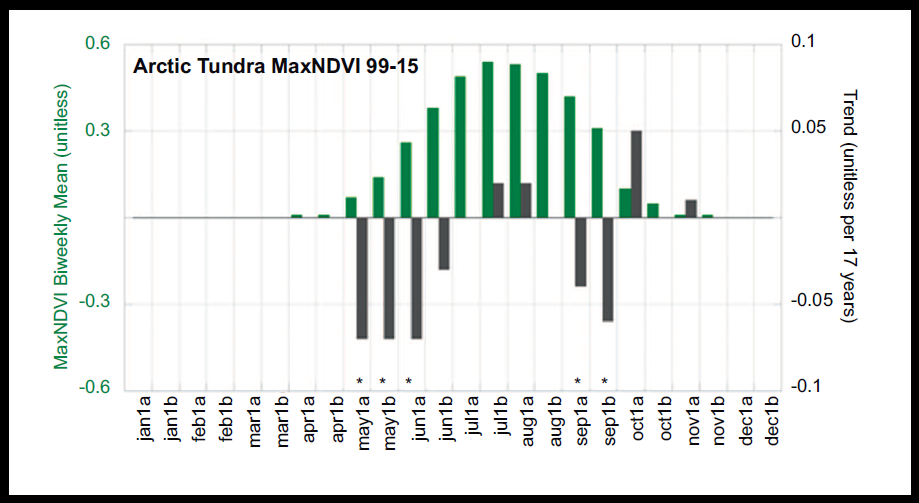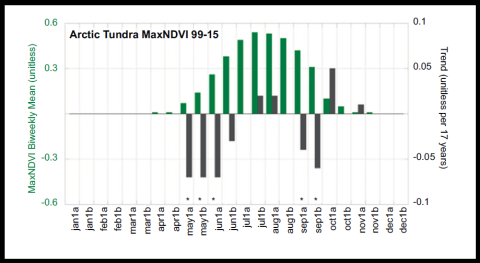ABoVE: Climate Drivers of Pan-Arctic Tundra Vegetation Productivity, 1982-2015
This dataset provides a summary of potential climate drivers of Arctic tundra vegetation productivity for the 1982-2015 growing seasons across the pan-arctic non-alpine tundra and the continental subdivisions of the North American and the Eurasian Arctic. Climate drivers include (1) maximum normalized difference vegetation index (NDVI) and time-integrated NDVI, (2) summer sea ice concentrations, (3) oceanic heat content, (4) land surface temperature, and (5) summer warmth index.
Research for the Arctic-Boreal Vulnerability Experiment (ABoVE) will link field-based, process-level studies with geospatial data products derived from airborne and satellite sensors, and data collection will occur in Alaska and western Canada during 2016-2021.
See all data from ABoVE.
Data Citation: Bhatt, U.S. 2018. ABoVE: Climate Drivers of Pan-Arctic Tundra Vegetation Productivity, 1982-2015. ORNL DAAC, Oak Ridge, Tennessee, USA. https://doi.org/10.3334/ORNLDAAC/1606
Data Center: ORNL DAAC
Sponsor: EOSDIS


